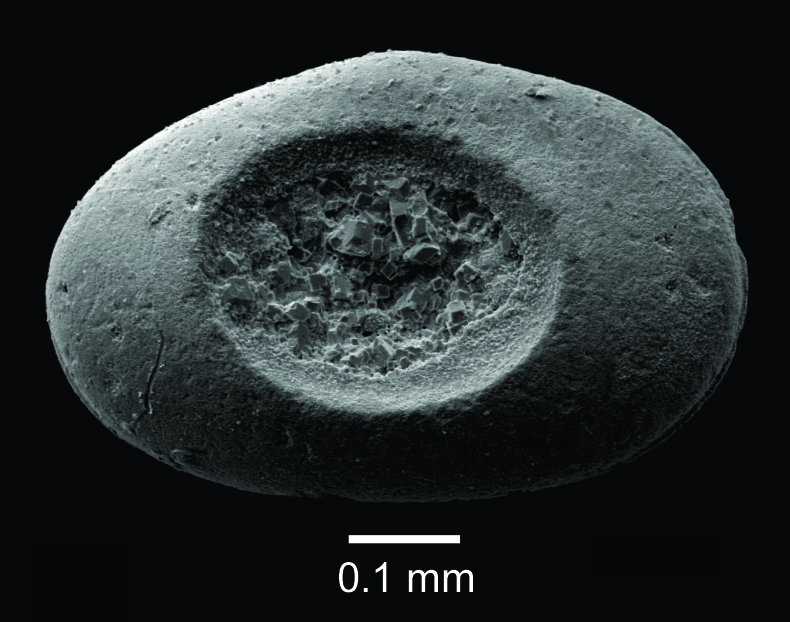
Ostracods are small crustaceans living in a variety of environments. They were also present in and on the ocean floor in Brazil 66 million years ago. This was the time when Earth experienced a major mass extinction due to a meteorite impact near Mexico and massive volcanism in India. The diversity of many animal and plant groups crashed, and for some groups it meant complete extinction (non-flying dinosaurs, rudist bivalves, mosasaurs, etc.).
Fossils of ostracods (or seed shrimps) were collected from rocks in Brazil above and below this so-called Cretaceous-Paleogene boundary 66 million years ago. The ostracod species were studied and named previously, showing a dramatic change in the ostracod fauna with the extinction and appearance of many species. However, ostracods can also be used to learn more about their predators. A study led by Dr. Jorge Villegas-Martín (Unisinos University, Brazil) and co-authored by Dr. Adiel Klompmaker (The University of Alabama Museums’ Curator of Paleontology) investigated drill holes present in the shells of ostracods. These holes are made by predatory gastropods that use chemicals such as acid and sharp, tiny teeth to weaken and remove the shell to gain access to the soft tissue for a meal. The central question was whether and to what extent predator-prey relationships were affected by this mass extinction.
After studying well over 3,000 specimens it turns out that predator-prey relationships were altered in several ways. Predation intensity was higher after the boundary, the average location of drill holes on the shell shifted somewhat, ostracod prey avoidance was particularly common after the boundary, and drilling gastropods as inferred from the size of the drill holes were larger after the boundary, also relative to their prey. Never have predator-prey interactions involving ostracods studied in such detail across this boundary. The Cretaceous-Paleogene boundary is also exposed at several places in Alabama, but ostracod predation across this boundary have yet to be studied in detail.
Reference:
Villegas-Martín, J., Ceolin, D., Klompmaker, A. A., Fauth, G., & Koutsoukos, E. A. (2023). Inferring the behaviour of predatory gastropods and their ostracod prey across the Cretaceous–Palaeogene boundary. Zoological Journal of the Linnean Society, zlad054.